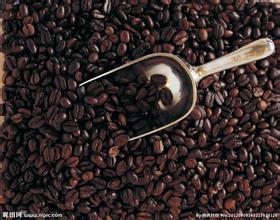Introduction to the regional treatment method of coffee bean species, characteristics, flavor, taste and manor production
Introduction to the regional treatment method of coffee bean species, characteristics, flavor, taste and manor production
Arabica coffee accounts for 75% of all coffee. Its excellent flavor and aroma make it the only coffee that can be drunk directly among these native species. But its resistance to dryness, frost, diseases and insect pests is low, especially the natural enemy of coffee-leaf rust, so the producing countries are committed to variety improvement. Sri Lanka is an example. Sri Lanka used to be a well-known coffee producer, but coffee farms were not spared by leaf rust at the end of the 19th century. Since then, Sri Lanka has turned to develop the black tea industry and rank the same black tea kingdom as India.
According to the statistics of the International Coffee Organization (ICO), excluding the domestic transactions of each coffee-producing country, about 65% of the coffee in circulation in the world market is Arabica and 35% is robusta. Arabica species are characterized by slender and flat grains, while robusta coffee beans are more round and can be easily distinguished by their shape.
But if you add in the hybrids of Arabica and Robusta-such as the variant Variedad Colombia, which is the main variety of Colombian coffee, has 1/4 Robusta pedigree, and therefore resistant to leaf rust and high yield-and its mutant subspecies of coffee beans, the classification is more complicated. Some Arabica coffee beans are quite close to the native species, while others are quite similar to the Robusta species. Even if the coffee has the same name (named from the place of origin), as long as the cultivated varieties are different, the flavor is different from the leaf rust-resistant varieties found in the African Congo, teaching the Arabica species to be more resistant to the disease. People like to compare the robusta species to the Arabica species of coffee. In fact, the robusta species was originally a mutant of the Congolese species (scientific name Cofffea canephora), so it is the Congolese species that should be compared with the Arabica species. To this day, however, the name of the Robusta species is commonly used by the public, and it is regarded as the same species as the Congolese species.
Arabica coffee beans grow at colder tropical high elevations, and the hot and humid zone that is not suitable for Arabica coffee is where robusta coffee grows. Robusta has a unique aroma (called "Rob smell", which some people think is moldy) and bitterness, accounting for only 2% of mixed coffee. 3%, the whole cup of coffee becomes Robusta flavor. Its flavor is so bright and strong that if you want to taste it directly, you have to consider it. It is generally used in instant coffee (which extracts about twice as much liquid coffee as Arabica), bottled coffee, liquid coffee and other industrial coffee. The content of caffeine is about 3.2%, much higher than 1.5% of Arabica species.
The main producers of Robusta species are Indonesia, Vietnam and West African countries centered around C ô te d'Ivoire, Algeria and Angola. In recent years, Vietnam has made more efforts to become one of the major coffee producing countries. Coffee production is also included in national policy (Vietnam also produces some Arabica coffee)

Important Notice :
前街咖啡 FrontStreet Coffee has moved to new addredd:
FrontStreet Coffee Address: 315,Donghua East Road,GuangZhou
Tel:020 38364473
- Prev

How to adjust the coffee bean grinding scale How to use which is better
How to adjust the grinding scale of coffee beans How to use which kind of better thickness can control bitterness The thickness is a good recipe for controlling bitterness, because the finer the grinding, the higher the extraction rate, the easier it is to extract high molecular weight astringent substances such as chlorogenic acid, quinic acid, caffeine and carbide. On the contrary, if the grinding is too coarse, the lower the extraction rate, the harder it is to extract high molecular weight bitter substances, but the medium molecular weight
- Next

Description of taste and flavor of coffee and bean washing method introduction to grinding scale of manor variety production area
Coffee bean washing method taste and flavor description manor variety production area grinding scale introduction most Caribbean and Central American countries express quality in terms of altitude. For example, the eastern region of Costa Rica produces LGA (Low Grown Atlantic Atlantic low altitude), MGA (Medium Grown Atlantic Mid-Atlantic altitude), and HGA (High Grown Atlantic Atlantic High altitude)
Related
- Guji coffee producing area of Guji, Ethiopia: Humbela, Shakiso, Wulaga
- What is the most expensive variety of Qiloso in BOP multi-variety group?
- How to store the coffee beans bought home?
- Why are Yemeni coffee beans so rare now?
- Ethiopian Sidamo all Red Fruit Sun Sun Santa Vini Coffee beans
- SOE is mostly sour? What does it mean? Is it a single bean? what's the difference between it and Italian blending?
- Is Italian coffee beans suitable for making hand-brewed coffee?
- How to choose coffee beans when making cold coffee? What kind of coffee beans are suitable for making cold coffee?
- Just entered the pit to make coffee, what kind of coffee beans should be chosen?
- Can only Japan buy real Blue Mountain Coffee? What are authentic Jamaican Blue Mountain coffee beans?

